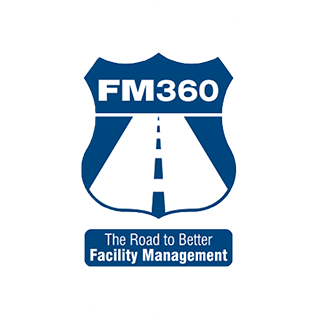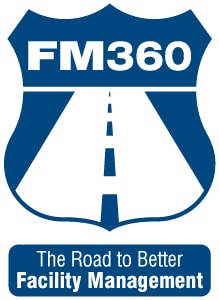 Other than its employees, a corporation’s facilities are its most costly asset. In our roles as facility managers, we are constantly faced with how we can extend the life of this aging infrastructure. Taking its toll is the deferred and/or insufficient preventative maintenance processes, which accelerates the systems’ deterioration. Combine that with not being able to objectively present the necessary financial data to executives, and we have little to no additional monies to renew our day-to-day systems before they fail. Taking these things into consideration necessitates the need for a capital renewal plan (CRP).
Other than its employees, a corporation’s facilities are its most costly asset. In our roles as facility managers, we are constantly faced with how we can extend the life of this aging infrastructure. Taking its toll is the deferred and/or insufficient preventative maintenance processes, which accelerates the systems’ deterioration. Combine that with not being able to objectively present the necessary financial data to executives, and we have little to no additional monies to renew our day-to-day systems before they fail. Taking these things into consideration necessitates the need for a capital renewal plan (CRP).
So what is a CRP? Capital renewal is the planned replacement of building subsystems such as roofs, electrical systems, HVAC systems, and plumbing systems that have reached the end of their useful lives. Without significant reinvestment in building subsystems, older facilities will fall into a state of deteriorating condition and functionality, and the repair and maintenance costs will increase. In other words, assets have a predictable lifespan and we should be able to forecast the facilities needs over a period of years.
Starting the process of developing a CRP is much like any other process we might encounter: first we need to understand what condition our assets are in, secondly we need to generate a combined CRP based on this understanding, and thirdly, we need to put that data in a format that will be reviewed with executives during the annual budgeting process.
Understanding what conditions our assets are in
There are multiple ways of doing this, but don’t think on your life that you can accomplish this task solely on your own. Facility Managers (FM) and their staffs typically have their hands full with just the daily tasks we are asked to do every day, much less examine our site with an unbiased approach. No, the best way to take a look at your site is with a new set of eyes, and that means hiring a competent contractor who will give you an unbiased opinion of what you have.
This does not mean that we will not be involved; quite the contrary. We are still part of the process. We have the necessary information that will make their job much easier and enable them to provide us with the information we seek. The information we seek regarding our assets should, at a minimum, include the following:
- Identification of defects, deficiencies, items of deferred maintenance, and material building code violations.
- Estimate costs to remedy physical deficiencies, for annual replacement reserve, and for preventative maintenance expenditures.
- Preparation of an annual Replacement Reserve & Preventative Maintenance Schedule.
- Preparation of a written report on the property’s overall physical condition, describing pertinent components or systems, identifying physical deficiencies and conditions that would limit the expected useful life of major components or systems.
Generating the CRP
Once we have an idea of the condition(s) of our assets, pulling the information into a single report is critical to seeing the bigger picture. This said, a variety of tools are available to us as FMs to accomplish this task. For instance:
- All of the financial planning can be consolidated into an Excel spreadsheet and sorted in a multitude of ways.
- Information for each facility could be entered into the CMMS system and reports and plans driven by the input.
Regardless, once the information is readily accessible in one location, it allows us to prioritize and categorize the needs of our facilities. As an example of this, the following suggested group of categories might be:
- Liability proposals – projects requiring early attention to remove deficiencies through life safety, property damage, or regulatory mandate
- Program and operational purposes – projects necessary to support an organization’s mission and meet operational requirements
- Economy and efficiency measures – projects that also support program and operational objectives, but deserve special attention because they will result in immediate or eventual cost savings
CRP for Executives
Putting all of this information in a form that executives will view as credible is critical to the success of any capital renewal plan. Without the support of the executives, following the same path of budgeting based on failure of systems will continue. To adequately present to the executives, we must put the information into a language they understand….MONEY!
One way to accomplish this is to convert all of the needs pointed out by the condition assessment to a few understandable metrics and models that will give them the information that the monies spent on what we say we need, really does what we say it will do: lengthen the longevity of their facilities.
Several key metrics and models include:
- Development of the Facility Condition Index (FCI) – A method for measuring the relative condition of a single facility or group of facilities. It describes the relative state or physical condition of a building against a cost model of a similar building as if it were at the beginning of its useful life, fully “renewed” to today’s standard.
- Development of category diagrams – In this case using pie charts to show what discipline the dollars will be spent in over time.
- Development of a Backlog Projection Model – The level of deferred maintenance backlog that will be obtained when assuming a certain funding level. Most often used when a capital renewal rate has been established by executives.
- Development of a Funding Projection Model – Projects the level of funding required to produce a certain backlog level. Commonly used when we want to achieve a certain FCI over the course of several years.
As you can realize this article only touches on the aspects of why a capital renewal plan is important and roughly outlines how to get there. Executives are looking at FMs to be the experts in the infrastructure of their facilities. When we give them data and models to tell them what we will invest in to lengthen the life of the 2nd most expensive asset the company owns, we are bound to be heard.
Scott Leadbetter, CFM has been the Facilities Manager at Idaho Power for over 10 years. In his 20 years’ experience, he has worked in similar capacity for HP, Jabil, and Johnson Controls. Scott has a Bachelor’s of Business Administration (BBA) in Operations Management and is the President of the Northern Rockies Chapter of IFMA.







